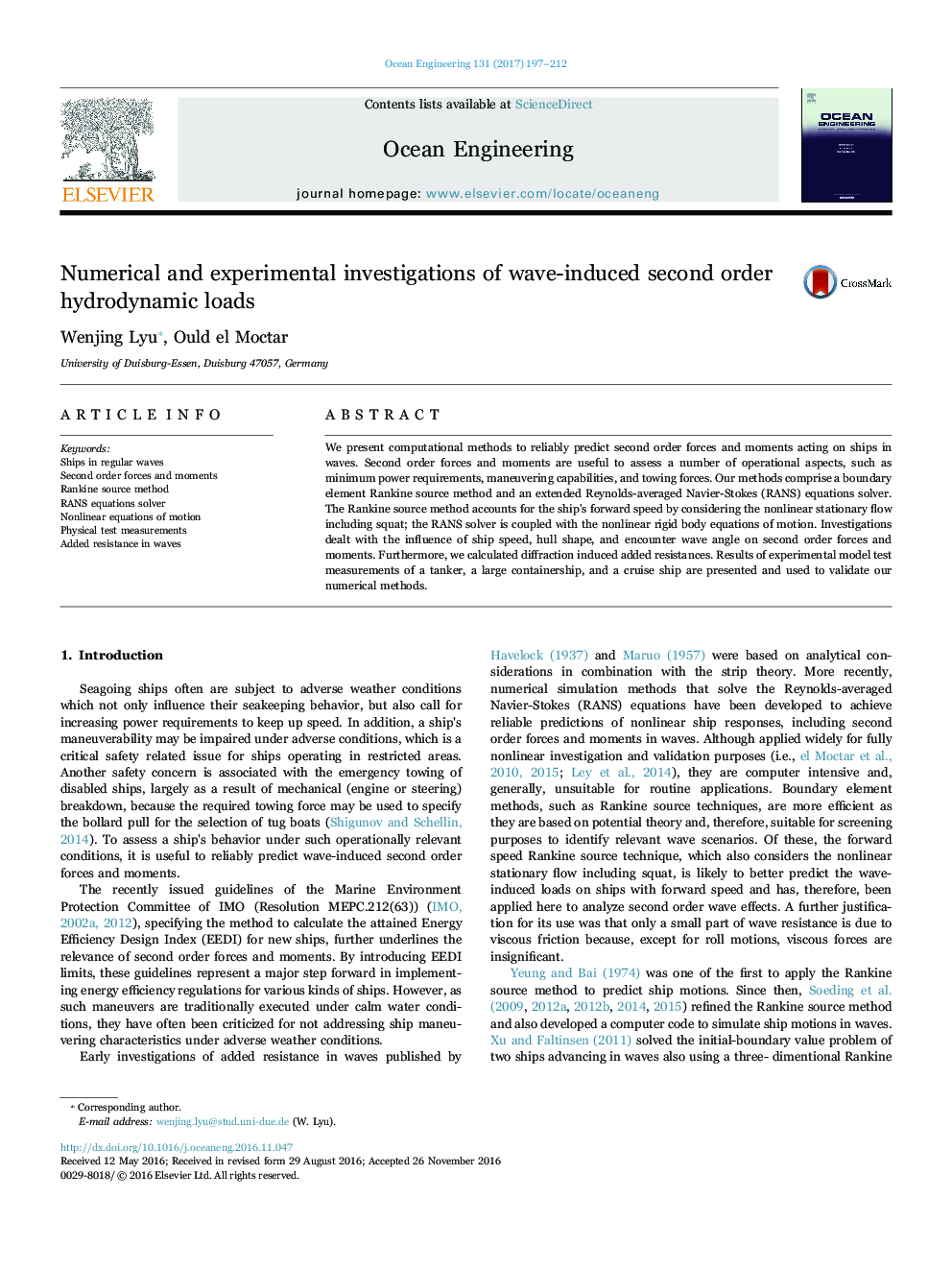| Article ID | Journal | Published Year | Pages | File Type |
|---|---|---|---|---|
| 5474521 | Ocean Engineering | 2017 | 16 Pages |
Abstract
We present computational methods to reliably predict second order forces and moments acting on ships in waves. Second order forces and moments are useful to assess a number of operational aspects, such as minimum power requirements, maneuvering capabilities, and towing forces. Our methods comprise a boundary element Rankine source method and an extended Reynolds-averaged Navier-Stokes (RANS) equations solver. The Rankine source method accounts for the ship's forward speed by considering the nonlinear stationary flow including squat; the RANS solver is coupled with the nonlinear rigid body equations of motion. Investigations dealt with the influence of ship speed, hull shape, and encounter wave angle on second order forces and moments. Furthermore, we calculated diffraction induced added resistances. Results of experimental model test measurements of a tanker, a large containership, and a cruise ship are presented and used to validate our numerical methods.
Related Topics
Physical Sciences and Engineering
Engineering
Ocean Engineering
Authors
Wenjing Lyu, Ould el Moctar,
